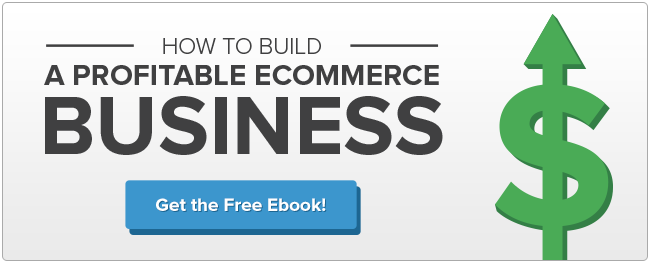
SEO can be tough. It is no miracle worker –– at least not overnight. Focusing hours of hard work on keywords and metadata likely isn’t any small business owner’s idea of money or time well-spent. Yet, the ROI from doing so has a long tail that seriously impacts your bottom line.
In fact, not spending time on SEO can mean failure for your ecommerce business. After all, if no one can find you, you don’t exist! And on the internet, that means if Google isn’t ranking you well, you might as well not even be selling online.
The only problem with SEO, then, is that its benefits take time.
“A typical client wants results as soon as SEO tactics are implemented,” says Katey Ferenzi, a client education manager at Bigcommerce. “As we all know, though, SEO takes time and constant tinkering and updating.”
This constant tinkering and updating is akin to how you view your homepage. You A/B test what converts and produces the most clicks, and then you use those metrics to make data-driven decisions that garner increased sales and overall revenue. SEO works the same way, especially when it comes to your product pages.
To compete with the big box brands, smaller stores must be experts at product page SEO. After all, customers favor convenience, and the search results that appear higher on Google are likely to earn their purchasing power. Below, the top three things you need to be implementing when it comes to your product pages in order to out-SEO your competition.
Long-Tail Keyword Phrases
Unlike blog posts for which you can search top keywords for a topic and sprinkle them throughout an article, product page keywords must be specific to the product being offered. In other words, there’s no need to do a large amount of keyword research for product pages. Instead, be specific and descriptive about the item offered –– and use long-tail keywords.
For instance, “landscape watercolor painting” works better than “watercolor painting” or “landscape painting.”
Again, get specific and descriptive for your product pages, but exclude options (colors, sizes, etc) from your keyword phrase. Optimize for individual products, not for the options of those products.
The Long-Tail Theory
Why use a long-tail keyword phrase instead of something shorter? Because the big box retailers of the world have already optimized for short-tail keywords, and your small business won’t be able to compete.
And that’s totally fine.
Long-tail keyword phrases catch the customer in a later point within the purchasing funnel. They know exactly what they are looking for, down to the details (options excluded!). They don’t want just any watercolor painting, they want a watercolor painting of a landscape. Sure, they don’t know which one just yet, but with a long-tail keyword phrase, you’re presenting them their filtered options.
Larger brands focus most often on short-tail keyword phrases that pull in high traffic volume to their site. Because of their recognizable brand name and sizable online presence, Google rewards their short-tail efforts by placing them higher in search results. A smaller ecommerce company won’t receive such a luxury. Instead, compete with the bigger brands by taking away their potential customers. People typing in a long-tail keyword phrase into Google have already browsed a couple options, and likely have already found a few things they like. Now, they are just comparing what they know exists to what else may be out there. For smaller brands, this is your time to shine –– and convert.
Sprinkle That Keyword Phrase Throughout
The goal here is to put your keyword phrase in as many places as possible, without over-optimizing for it. Google will penalize you for using a keyword phrase so often it becomes obvious you are writing for the bots, not for people.
You want to make sure that your keyword phrase appears in all of the following places for your product page:
- the product name
- product description
- page title
- meta description
- alt text (the picture description text)
- the picture file name
- and the URL itself
Write Compelling Product Descriptions
Use the product description to voice your brand personality, while also dropping in (only once!) your long-tail keyword. The unique description along with the presence of the long-tail keyword will increase your page rankings. Better yet, customers don’t just buy based on price, they do so based on emotion as well. Get a customer to relate to your description, or at least read it in their own voice, and you’ve likely found yourself a customer with some serious lifetime value.
In all, if you want to succeed with product page SEO, you must make sure that each of your long-tail keyword phrases are unique, descriptive and specific. In addition, be sure that you aren’t just using that keyword phrase once. Use it in all the spots where bots-only can read them (i.e. the metadata and alt text). When it comes to what your actual customers are reading, be sure you use the keyword phrase, but not in a way that alienates them (i.e. only once!).
Also, keep in mind that good SEO pulls in traffic overtime. Be sure to use SEO best practices on all product pages, and watch your site begin to make it to the top of Google search queries for long-tail keywords.
![]()







